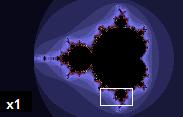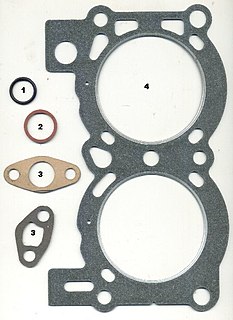
In mathematics, a fractal is a subset of a Euclidean space for which the Hausdorff dimension strictly exceeds the topological dimension. Fractals tend to appear nearly the same at different levels, as is illustrated here in the successively small magnifications of the Mandelbrot set; Because of this, fractals are encountered ubiquitously in nature. Fractals exhibit similar patterns at increasingly small scales called self similarity, also known as expanding symmetry or unfolding symmetry; If this replication is exactly the same at every scale, as in the Menger sponge, it is called affine self-similar.

In mathematics, Hausdorff dimension is a measure of roughness and/or chaos that was first introduced in 1918 by mathematician Felix Hausdorff. Applying the mathematical formula, the Hausdorff dimension of a single point is zero, of a line segment is 1, of a square is 2, and of a cube is 3. That is, for sets of points that define a smooth shape or a shape that has a small number of corners—the shapes of traditional geometry and science—the Hausdorff dimension is an integer agreeing with the usual sense of dimension, also known as the topological dimension. However, formulas have also been developed that allow calculation of the dimension of other less simple objects, where, based solely on their properties of scaling and self-similarity, one is led to the conclusion that particular objects—including fractals—have non-integer Hausdorff dimensions. Because of the significant technical advances made by Abram Samoilovitch Besicovitch allowing computation of dimensions for highly irregular or "rough" sets, this dimension is also commonly referred to as the Hausdorff–Besicovitch dimension.

The Sierpinski triangle, also called the Sierpinski gasket or the Sierpinski sieve, is a fractal and attractive fixed set with the overall shape of an equilateral triangle, subdivided recursively into smaller equilateral triangles. Originally constructed as a curve, this is one of the basic examples of self-similar sets–that is, it is a mathematically generated pattern that is reproducible at any magnification or reduction. It is named after the Polish mathematician Wacław Sierpiński, but appeared as a decorative pattern many centuries before the work of Sierpiński.

Fractal art is a form of algorithmic art created by calculating fractal objects and representing the calculation results as still images, animations, and media. Fractal art developed from the mid-1980s onwards. It is a genre of computer art and digital art which are part of new media art. The mathematical beauty of fractals lies at the intersection of generative art and computer art. They combine to produce a type of abstract art.

A fractal landscape is a surface generated using a stochastic algorithm designed to produce fractal behaviour that mimics the appearance of natural terrain. In other words, the result of the procedure is not a deterministic fractal surface, but rather a random surface that exhibits fractal behaviour.

In mathematics, iterated function systems (IFSs) are a method of constructing fractals; the resulting fractals are often self-similar. IFS fractals are more related to set theory than fractal geometry. They were introduced in 1981.
A slip joint is a mechanical construction allowing extension and compression in a linear structure.

Apophysis is an open source fractal flame editor and renderer for Microsoft Windows and Macintosh.

Algorithmic art, also known as algorithm art, is art, mostly visual art, of which the design is generated by an algorithm. Algorithmic artists are sometimes called algorists.

Video feedback is the process that starts and continues when a video camera is pointed at its own playback video monitor. The loop delay from camera to display back to camera is at least one video frame time, due to the input and output scanning processes; it can be more if there is more processing in the loop.

A fitting is used in pipe systems to connect the straight pipe or tubing sections, adapt to different sizes or shapes and for other purposes, such as regulating fluid flow. "Plumbing" is generally used to describe the conveyance of water, gas, or liquid waste in domestic or commercial environments; "piping" is often used to describe the high-performance conveyance of fluids in specialized applications. "Tubing" is sometimes used for lighter-weight piping, especially that flexible enough to be supplied in coiled form.

Indra's Pearls: The Vision of Felix Klein is a geometry book written by David Mumford, Caroline Series and David Wright, and published by Cambridge University Press in 2002 and 2015.

Apollonian sphere packing is the three-dimensional equivalent of the Apollonian gasket. The principle of construction is very similar: with any four spheres that are cotangent to each other, it is then possible to construct two more spheres that are cotangent to four of them.

A scenery generator refers to software used to create landscape images, 3D models, and animations. These programs often use procedural generation to generate the landscapes. If not using procedural generation to create the landscapes, then normally a 3D artist would render and create the landscapes. These programs are often used in video games or movies. Basic elements of landscapes created by scenery generators include terrain, water, foliage, and clouds. The process for basic random generation uses a diamond square algorithm.

Fractal-generating software is any type of graphics software that generates images of fractals. There are many fractal generating programs available, both free and commercial. Mobile apps are available to play or tinker with fractals. Some programmers create fractal software for themselves because of the novelty and because of the challenge in understanding the related mathematics. The generation of fractals has led to some very large problems for pure mathematics.

Sterling is a fractal-generating computer program written in the C programming language in 1999 for Microsoft Windows by Stephen C. Ferguson. Sterling was initially released as freeware but is not free now. Sterling2 is a freeware version of Sterling with different algorithms. It was released in September 2008 by Tad Boniecki. Apart from the name, the program looks just like the original Sterling. The only internals that are different are the 50 formulae for fractal generation. Parameter files made by Sterling can be used in Sterling2 and vice versa, though they will draw different images.

Computer-generated imagery (CGI) is the application of computer graphics to create or contribute to images in art, printed media, video games, films, television programs, shorts, commercials, videos, and simulators. The visual scenes may be dynamic or static and may be two-dimensional (2D), though the term "CGI" is most commonly used to refer to 3D computer graphics used for creating scenes or special effects in films and television. Additionally, the use of 2D CGI is often mistakenly referred to as "traditional animation", most often in the case when dedicated animation software such as Adobe Flash or Toon Boom is not used or the CGI is hand drawn using a tablet and mouse.

















